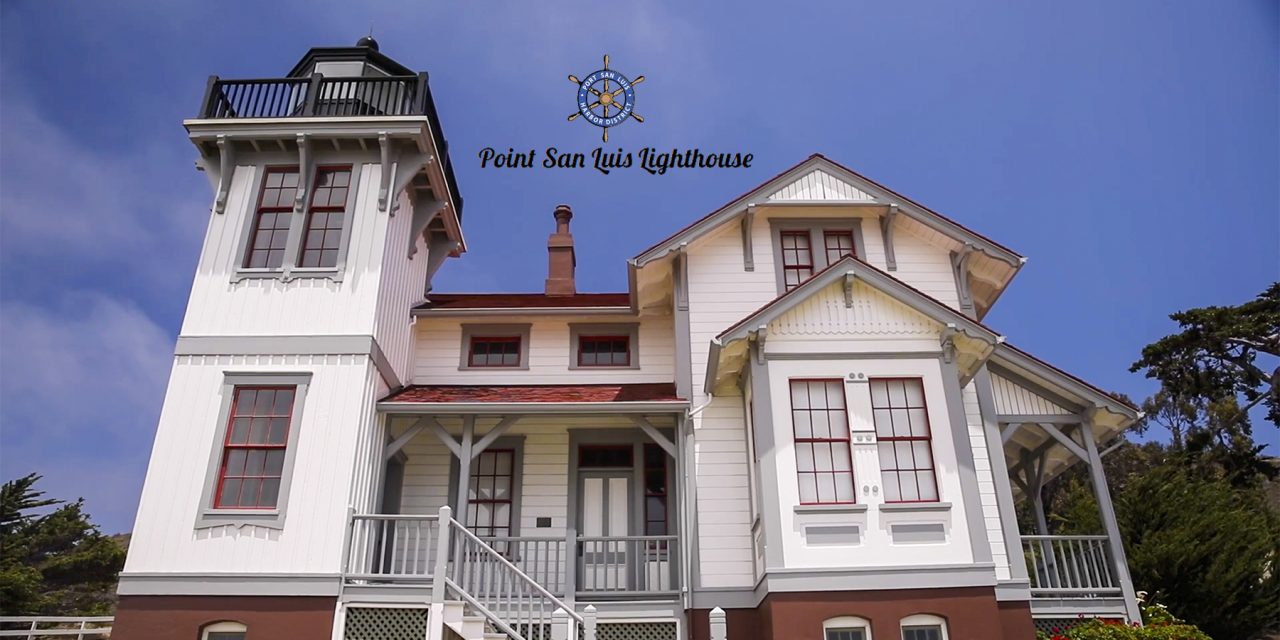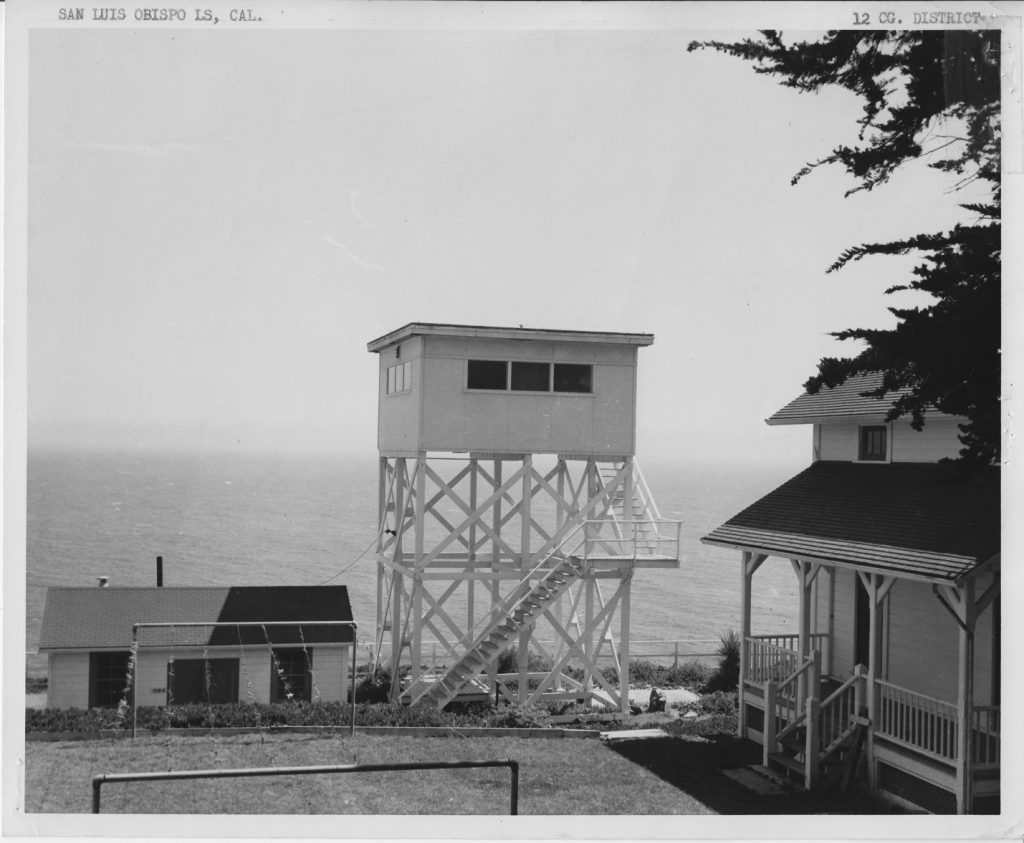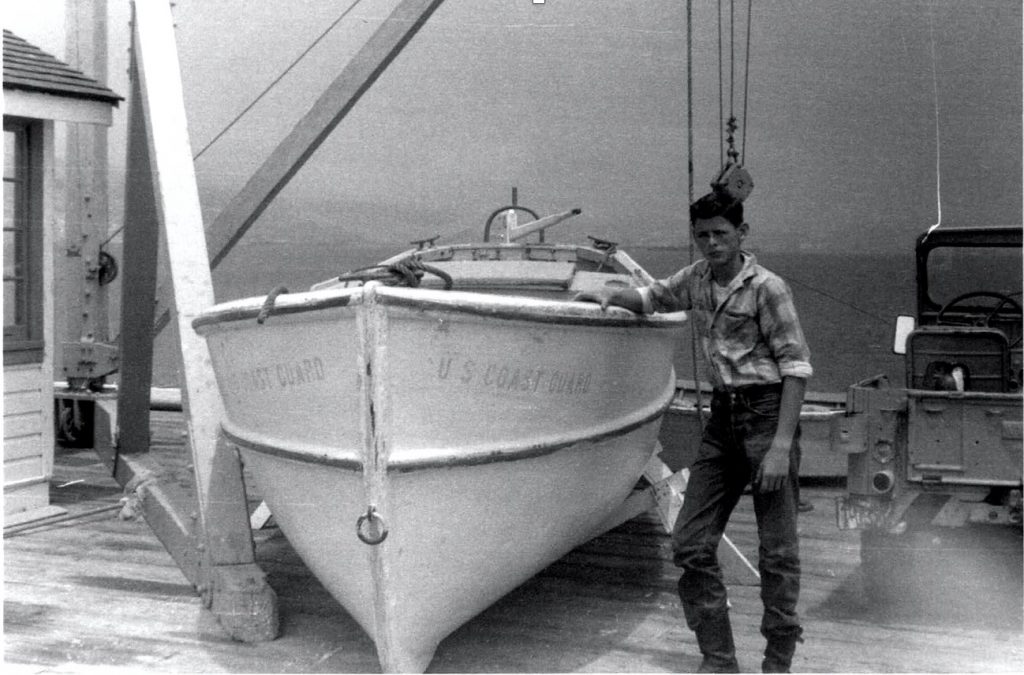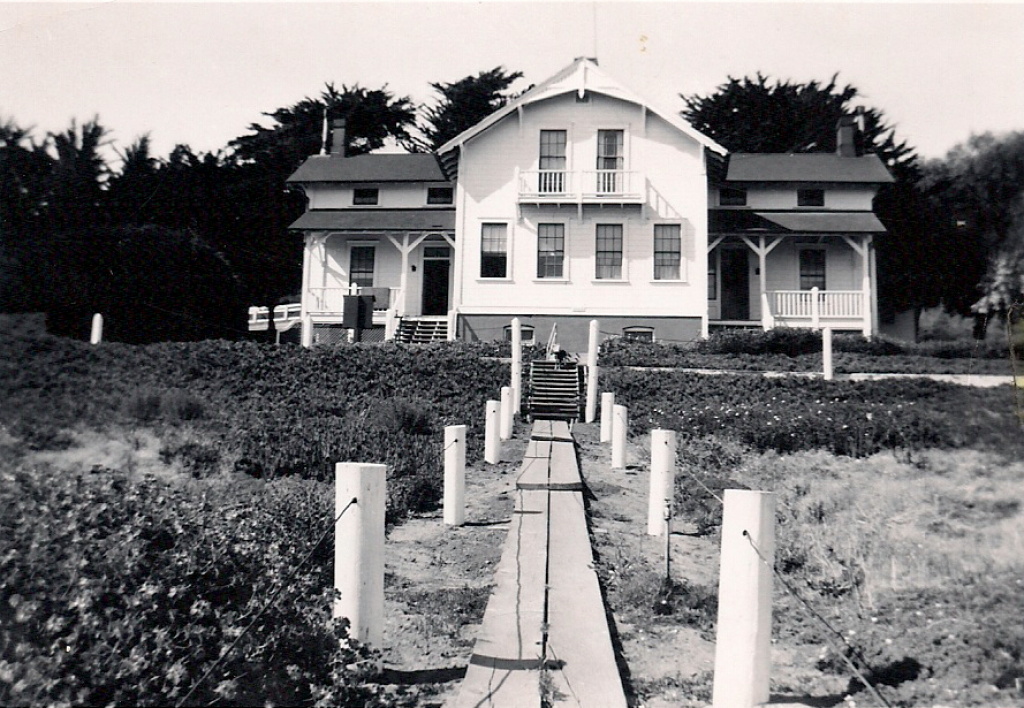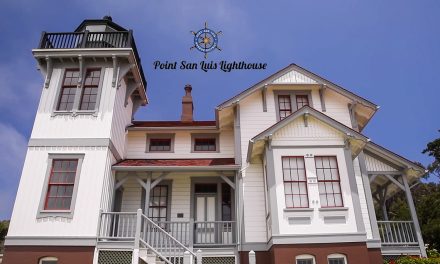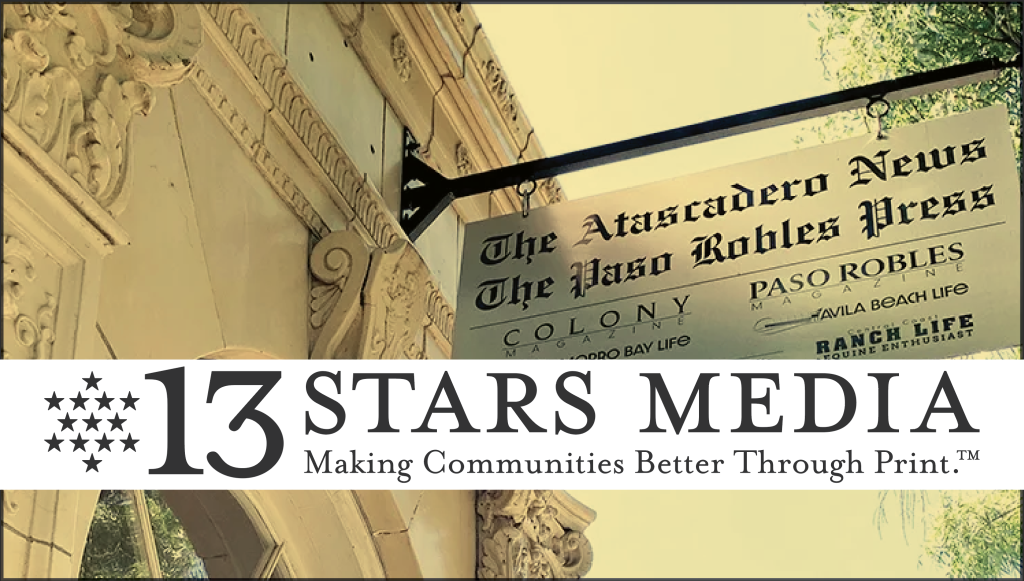Coast Guardsman William “Bill” Colagross, his wife Sharon, and daughters Debbie and Cheryl were stationed at Point San Luis during 1956 and 1957. At age twenty-four, Colagross was the officer-in-charge. His younger brother Curt spent two summers staying with them; he was around thirteen years old during the summer of ’56.
Curt’s brother and his family lived in the Victorian duplex, demolished in 1960:
“That front porch had a beautiful view of the ocean. I can remember on warm afternoons, the whole family sitting out there over lunch, also sitting out there with Bill while he polished his shoes.
[My bedroom] was over the dining room…I can still remember waking up to the sound of the foghorn, but soon turning over and back to sleep I’d go. Some nights I’d lie in bed watching as the beam from the beacon reflected off the bedroom walls as it passed through the window sheers.”
Curt remembers the Keeper’s dwelling, now restored but at the time unoccupied and in a state of disrepair.
“The lighthouse Keeper’s house wasn’t boarded up or even locked. Several times, and by myself, I’d walk from room to room, looking at the wooden floors and wallpapered walls, always looLighthousehat “secret room” that I knew had to be there. And, of course, listening, wishing the walls could talk. Wondering what it must have been like [for the keepers], out in the middle of nowhere with no one but themselves to depend upon…”
Curt recalls a tall white building on stilts at the light station. He was told it was used during World War II to house a radar system. At the time he was visiting, the building was empty of any equipment and was used just for storage. Curt remembers that when his folks came to take him back home, he hid up there. He didn’t want to leave.
Another building Curt recalls was an old adobe on the adjoining ranch:
“I can remember being completely awestruck when I first saw the adobe, especially after learning its history. It was in the middle of nowhere! The only way to get to it was by Jeep—it was pretty far from the lighthouse. It was built very close to the coast and was in very poor shape. If I remember correctly, there were no windows or doors. The only reason for it being built where it was had to have been (besides the beautiful view) fresh water, which was needed to make the adobe bricks. By the looks of the exterior and the inside, it had to have been abandoned for a number of years. The critters and the cattle had definitely taken over.
As we approached the adobe, Bill gave me its history, which he must have gotten, I’m thinking, from Mr. Marre. Because I found out later that Bill (very outgoing), after meeting Mr. Marre, was offered employment on his days off. He was paid to drive Mr. Marre around in his Jeep, so he could check on his ranch and cattle.
To this day, it amazes me that nothing was done to preserve this adobe.”
(The abode Curt Colagross saw was most likely the Pecho Adobe, also called the Rancho Pecho y Islay Adobe. It was adjacent to Pecho Creek and probably dated from the 1840s. The adobe had fallen into ruins by the 1960s.)
Curt and his brother’s family would spend their free time at the lighthouse beach, hiking on the surrounding ranchlands, crabbing or fishing off the breakwater and Whaler’s Island, and visiting the town of Avila.
The only access to the lighthouse, other than by boat, was a narrow footpath from Avila. (The private road to the lighthouse wasn’t built until 1962.) The Guardsmen, Curt recalls, always used the boat. It was much easier, he said, especially if you had to bring something back.
“It was a 20-foot boat, double ender with an inboard motor. I can even remember being allowed to raise and lower the boat by boom, from the water to the dock and back into the water. Under supervision of course. I was also allowed to operate that boat, away from other boats or docks. Coming close to either, [Bill] or one of the Guardsmen would take over. [Once] getting ready for inspectiondouble-endershort-handed, Bill asked me to repaint the numbers and lettering on the exterior of the boat. I guess it passed!”
Curt remembers that every time he and his brother would “motor through the harbor,” they’d get waves and smiles from the fishermen and pleasure boat owners. And every once in a while they’d get a signal to approach a fishing boat where fresh fish was offered. Sometimes fishing boats would come to the light station’s dock:
“A ‘ship to shore’ call would come in at the watch room desk when a fishing boat decided to share their catch. The Guardsman closest to the Jeep would then be notified, drive down to the dock, pick up what was left (before the birds and critters could get to it), and then divide it among the families. Bill was a pretty good cook, and fixing salmon was one of his specialties.”
The small grocery store in Avila was a place “where my brother and his family were always greeted with a smile.” It was while shopping at the grocery store that Curt’s brother and the other Guardsmen would get invitations to parties, holiday celebrations, and other festivities around town.
“The overall experience was unbelievable. It was like living on an island…An experience a young kid only dreams about. Something you’d see at a theater on the big screen, and then that night, visualize yourself there in your dreams. But to think that I was that “lucky” kid, I got to live it, thanks to the love of an older brother.
The smell of the ocean, the fishing, the sun setting off in the distance…The light from the beacon as it crawled its way along the ground, over the ocean, rocks, and through our windows. The foghorn with its mournful cries while only being able to see a couple of feet in front of you. Lying in bed, wondering about those out on the ocean. But soon, and getting used to the call of the foghorn, turning over, and falling back to sleep.
The long rides in the jeep to the adobe and beyond. In the boat, checking this, checking that. Walks along the boardwalk in Avila Beach, the shops, and of course, the smell of fresh taffy being made. The one movie that still brings back these memories of the ‘old’ Avila Beach is the ‘Summer of 42.’”
About
The Point San Luis Lighthouse is open once again for shuttle bus tours! Starting May 1st, tours will run every Saturday at noon and 1 pm. Starting June 1st, tours will also run on Wednesdays. Tickets can be purchased at my805tix.com.

